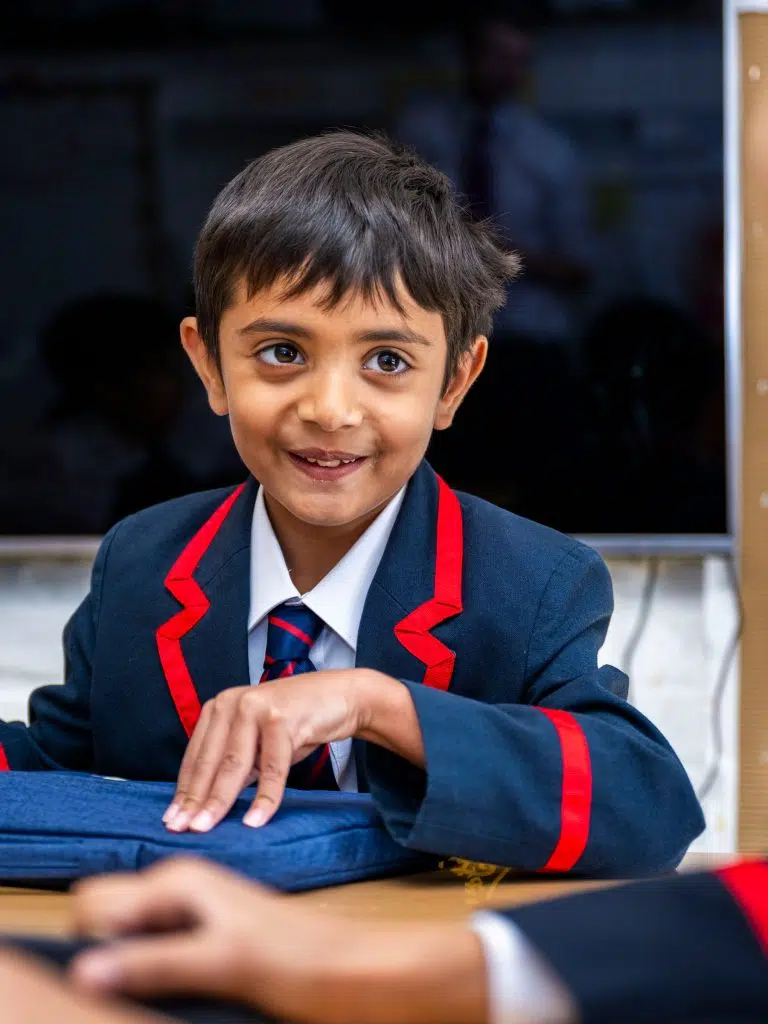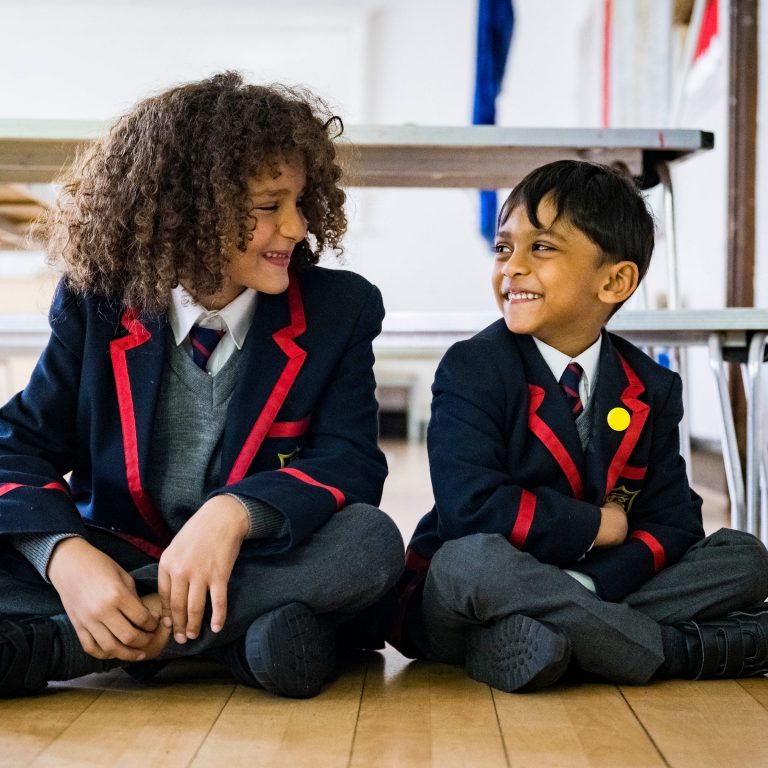Science at Elmhurst always goes off with a bang! Mainly blowing the children’s minds with the ‘ooh’ and the ‘aah’ and the ‘wow’ that our science studies bring. Our science is based exclusively around investigations and enquiry where we aim to develop pupils’ divergent thinking and ability to work scientifically: questioning the often surprising results!
This article concentrates on the Science undertaken at our Key Stage 2 level and will rehearse last term’s activities to provide a flavour of what your children will continue to experience in science.
YEAR 3
The children studied the formation of igneous, metamorphic and sedimentary rocks; also fossils – even simulating their creation, using fire, water and compression. They undertook investigations such as the Mohs test and used microscopes for detailed examinations. Real fossils were exhibited including the opportunity to touch a real ammonite fossil the size of a coffee
table and an iguanodon footprint the size of a pupil! By undertaking activities in a hands on way, we aim to ignite their interest, teach them how to operate scientifically and provide them with learning they will remember.
The human diet was analysed, categorised into food groups and minerals, proteins, nutrients etc. identified. The amount of fat in various food was tested and labels on packaging analysed – all of which provided children with an in-depth examination into what they ate and what food would assist with staying healthy.
YEAR 4
Children investigated and classified trees and plants, vertebrates and invertebrates capitalising on their ‘Forest School’ activities. This enabled them to appreciate the similarities and differences of living things and how classification facilitates identification. They analysed teeth specimens of various animals and sought to determine whether they were herbivores, carnivores or omnivores. They learnt about Human teeth and how to look after them. Whilst focussing on the human body, they investigated the digestive system: they cut and mashed a sandwich (representing teeth), simulated saliva and acid and used tights to represent the colon (removing water and nutrients). This allowed them to learn about the digestive process in a fun way that would facilitate the retention of the key
facts.
YEAR 5
Year 5 tested whether materials were ‘fit for purpose’ including the design of plastic carrier bag handles – setting up an investigation to test whether the handles would cut into one’s hands when laden. Children undertook a survey of the materials used around the School, plotting the results on a bar chart. Using this information, they suggested why such materials had been chosen e.g. wooden handles for saucepans as an insulator to avoid the conduction of heat etc. They tested materials for the conducting (and insulating) of electricity and analysed the materials used on a modern bike – all of which developed their appreciation of the place for science in our lives.
Their last area of focus was that of developing their divergent thinking through constructing hypotheses for what happens when solids, liquids and gas are subjected to alternative conditions. Reversible and irreversible changes were recorded: carbon dioxide rockets launched; the requisites for fire identified and the making of honeycomb was especially popular! A crackle and pop!
Finally, they were challenged with converting water into its constituent parts of hydrogen and oxygen (and then using the hydrogen to power model cars). Thought was then invested into whether the change could be reversed.
YEAR 6
Pupils enhanced their classification skills by being challenged to design the layout of plants for an outdoor garden centre. Furthermore, they had to construct a commentary for a visiting botanist. This enabled them to gain an in-depth appreciation of the need for classification in our lives. Studies then focussed on the human circulatory system with a detailed look into the organs and blood vessels. The children made simulated blood with the constituents of platelets, plasma, red blood cells etc. Learning in this fun way to assist the retention of facts and the provide a deeper understanding. The physiology of the human heart was investigated (including the making and labelling of clay models to show the chambers etc.). Taking this a step further, the children made predictions of what their heart rate would be when subjected to various cardio-vascular activities. Such activities were then undertaken and meters employed to record said heart rate. The results were plotted on line graphs and then analysed (mode, mean and median etc.) and their method evaluated. Focus then turned to medicines and vaccines. The plague in 1665 was put into
context with the current pandemic and the children examined the effectiveness of the current vaccines used in a bid to fight the Coronavirus. Children undertook a scientific investigation (using ultra-violet light) to gauge the effectiveness (OR NOT!) of their hand washing regime.
Finally, the pupils researched the effect and risk of drugs (legal and illegal) – an in-depth investigation carefully undertaken in conjunction with our PHSE curriculum. Putting this into context, we looked at techniques to handle peer pressure and how to react to an invitation to partake in using such substances.
In conclusion, science at Elmhurst has cognitive development at its heart and a commitment to make the learning relevant to their lives. We will continue to stretch pupils with a curriculum jam packed with practical investigations and questioning to develop cognition. All undertaken in a fun way that will help them retain their learning.
We will welcome the Spring in with a ‘woosh’, ‘bang’ and ‘pop’! All vigorously analysed and evaluated by the children of course!



